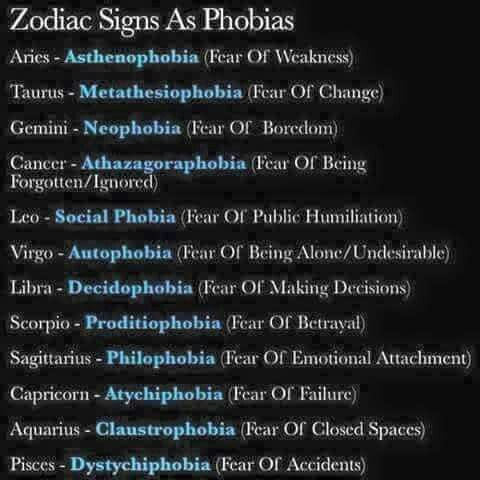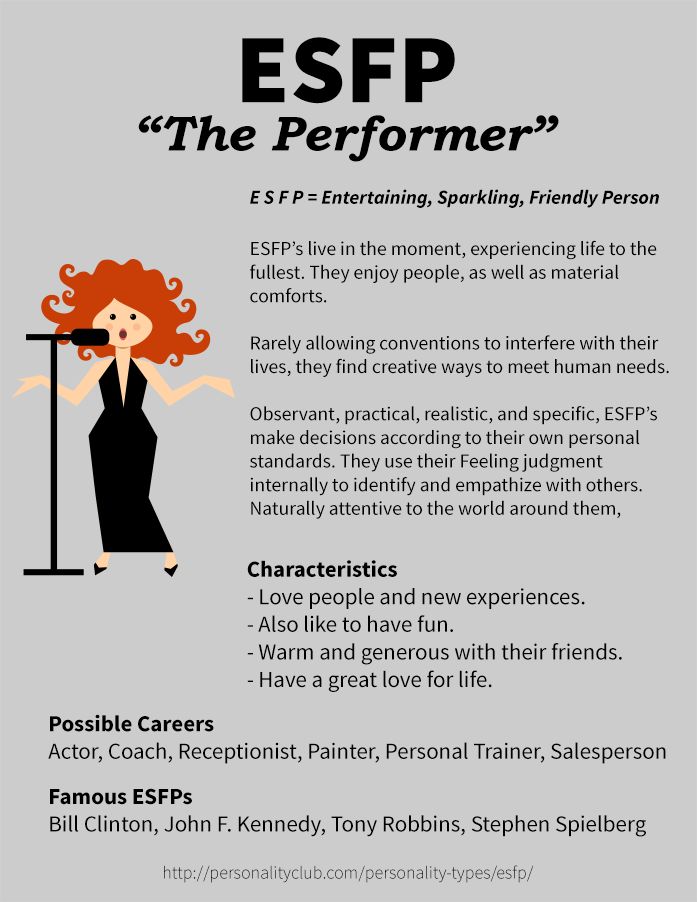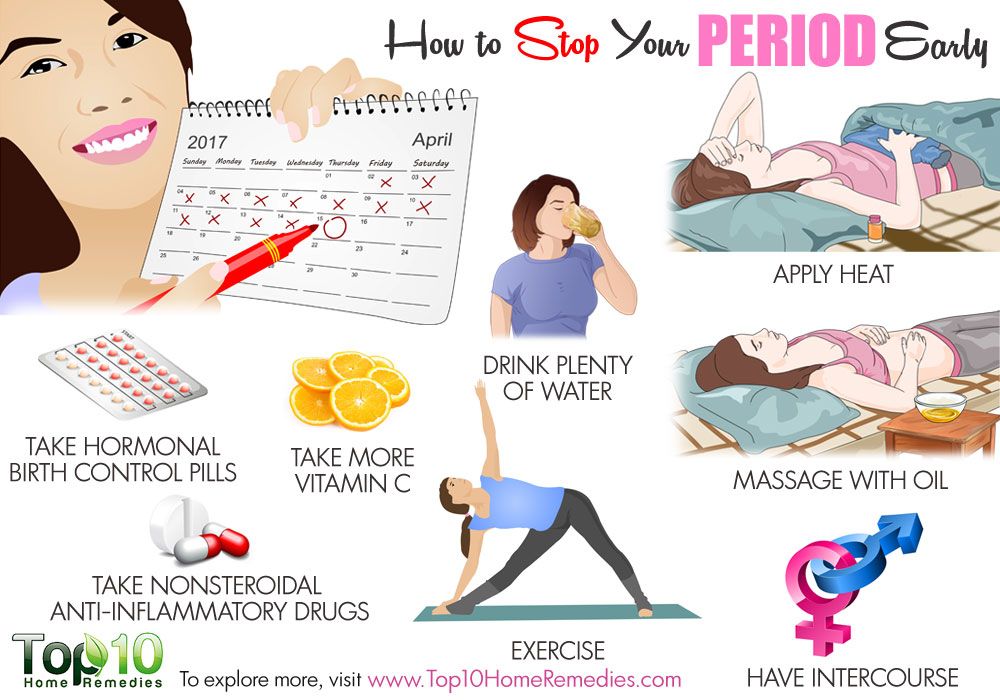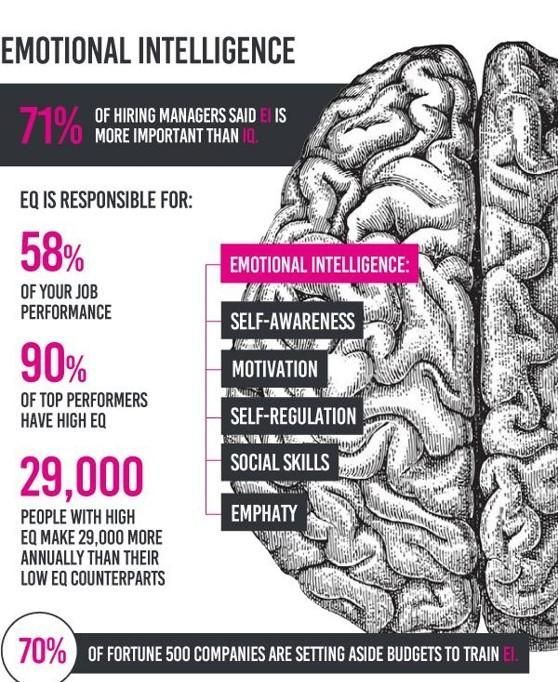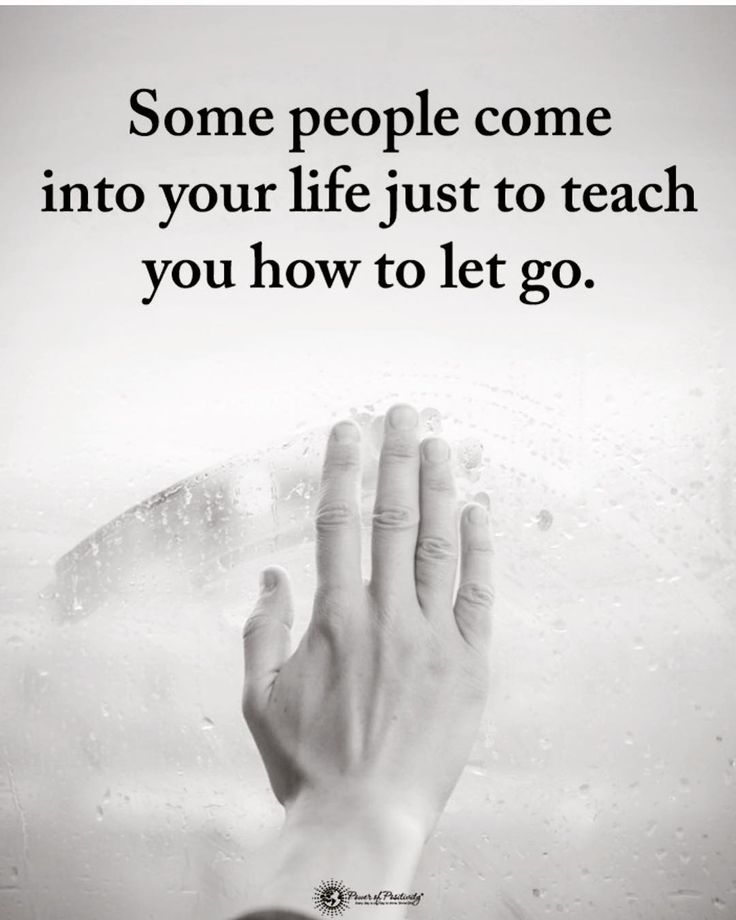Broken heart emotions
The science behind a broken heart
While it will be different for every person and every circumstance, there are some scientifically sound methods of heartbreak healing you can try.
Heartbreak is an unfortunately common part of the human experience, and it really, really sucks. We’ve all been there, and it’s safe to say we all want to avoid experiencing heartbreak ever again.
We feel heart broken when we lose someone or something we loved or wanted very much, like a romantic relationship or a friendship, a family member, a pet, or a job or opportunity that was very important to us.
Heartbreak can cause a large amount of stress, especially if the loss is a sudden one. This stress can affect how we feel emotionally and physically, and may take weeks, months or even years to recover from.
While there’s still a lot to discover about how and why we experience love and heartbreak and the effect these have on our bodies, scientific study has provided us with some clues about why heartbreak makes you feel so rubbish, and some strategies to use if you’re feeling really down.
Why does it hurt so much?
Studies show that your brain registers the emotional pain of heartbreak in the same way as physical pain, which is why you might feel like your heartbreak is causing actual physical hurt. The language we use to describe heartbreak – “I feel like my heart’s been ripped out”, “it was gut wrenching”, “like a slap in the face” – all hint at the way we associate physical pain with emotional pain.
Heartbreak hormones
Hormones aren’t just for randy teenagers – our bodies produce a long list of hormones every day for different purposes, including falling in and out of love.
Love can be addictive, like a drug, because of the hormones our brain releases when we become really attached to someone or something. Dopamine and oxytocin in particular are hormones which make us feel good and want to repeat behaviours, and are released at elevated levels when we’re in love.
Then, when heartbreak happens, these hormone levels drop and are replaced with the stress hormone cortisol.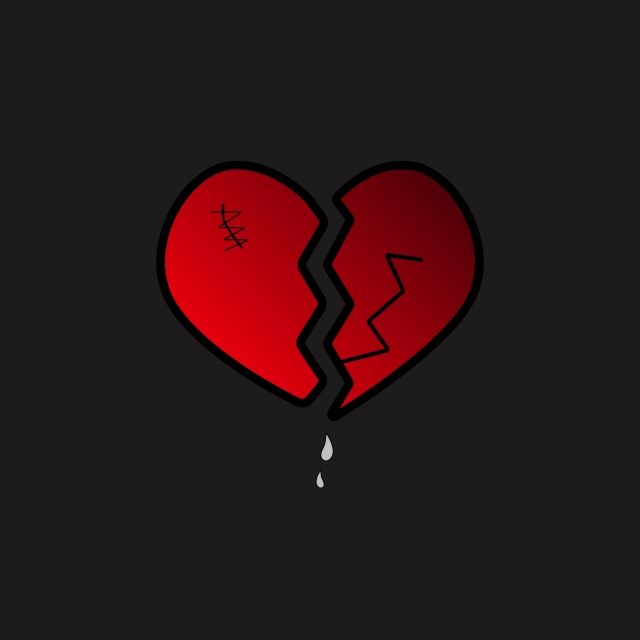 Designed to support your body’s fight-or-flight response, too much cortisol over a period of time can contribute to anxiety, nausea, acne and weight gain – all those unpleasant mental and physical symptoms associated with heartbreak.
Designed to support your body’s fight-or-flight response, too much cortisol over a period of time can contribute to anxiety, nausea, acne and weight gain – all those unpleasant mental and physical symptoms associated with heartbreak.
A medically broken heart
Ever wondered if emotional heartbreak can actually, physically break your heart?
Takotsubo Cardiomyopathy is the medical name for a syndrome that can be caused by heartbreak, or more accurately, the stress of a heartbreaking situation.
Acute emotional stress, positive or negative, can cause the left ventricle of the heart to be ‘stunned’ or paralysed, causing heart attack-like symptoms including strong chest, arm or shoulder pains, shortness of breath, dizziness, loss of consciousness, nausea and vomiting.
The good news: the condition doesn’t usually cause permanent damage like a heart attack does, and often resolves itself. The bad news: it can be stressful and painful, with people often thinking they’re having an actual heart attack.
Because it’s not possible to tell without tests what’s causing your symptoms, if you ever experience the symptoms of heart attack you should call Triple Zero (000) for an ambulance.
How to heal heartbreak
While it will be different for every person and every circumstance, there are some scientifically sound methods of heartbreak healing you can try.
Tips for dealing with general stress can help you in times of heartbreak, and set up healthy habits for an ongoing, healthy lifestyle. When you’re heartbroken, it can be easy to withdraw from your regular life and stop doing the things that you enjoy. But getting out and about, spending time with positive and supportive people, eating well and exercise can all help boost your mood and distract you from your upset.
Keep in mind that the old adage that “you’ll heal with time” has some truth to it. Over time, as the stress eases and you begin to calm down and recover, you should expect your bodily systems to gradually return to normal.
When to get help
There’s no shame in feeling like you’re not coping very well with a heart break – as we’ve seen, heart break can be a big shock to the system.
If you’re feeling like the stress, sadness or anger isn’t passing, if you’re having trouble getting back to normal life, or if you’re concerned in any way about how you’re feeling mentally or physically, it’s time to get some extra help. Talk with a supportive friend, family member or partner, book an appointment with your GP, or call a hotline like Lifeline or beyondblue to talk to a counsellor about how you’re feeling.
This Is Your Brain on Heartbreak
As most of us know all too well, when you’re reeling from the finale of a romantic relationship that you didn’t want to end, your emotional and bodily reactions are a tangle: You’re still in love and want to reconcile, but you’re also angry and confused; simultaneously, you’re jonesing for a “fix” of the person who has abruptly left your life, and you might go to dramatic, even embarrassing, lengths to get it, even though part of you knows better.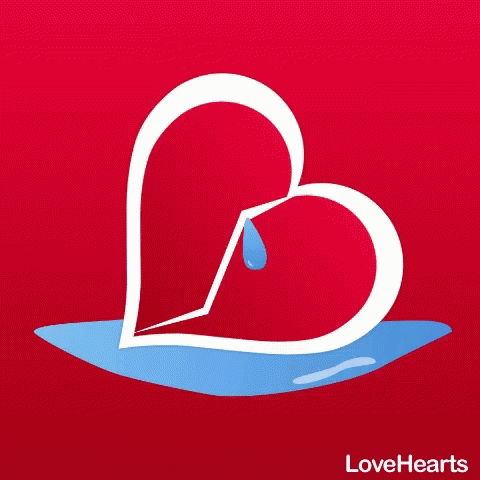
What does our brain look like when we’re in the throes of such agonizing heartbreak? This isn’t just an academic question. The answer can help us better understand not only what’s going on inside our lovelorn bodies, but why humans may have evolved to feel such visceral pain in the wake of a break-up. In that light, the neuroscience of heartbreak can offer some practical—and provocative—ideas for how we can recover from love gone wrong.
Addicted to love
Advertisement XMeet the Greater Good Toolkit
From the GGSC to your bookshelf: 30 science-backed tools for well-being.
The earliest pairings of brain research and love research, from around 2005, established the baseline that would inform research going forward: what a brain in love looks like. In a study led by psychologist Art Aron, neurologist Lucy Brown, and anthropologist Helen Fisher, individuals who were deeply in love viewed images of their beloved and simultaneously had their brains scanned in an fMRI machine, which maps neural activity by measuring changes in blood flow in the brain.![]() The fMRI’s vivid casts of yellows, greens, and blues—fireworks across gray matter—clearly showed that romantic love activates in the caudate nucleus, via a flood of dopamine.
The fMRI’s vivid casts of yellows, greens, and blues—fireworks across gray matter—clearly showed that romantic love activates in the caudate nucleus, via a flood of dopamine.
© Don Bayley
The caudate nucleus is associated with what psychologists call “motivation and goal-oriented behavior,” or “the rewards system.” To many of these experts, the fact that love fires there suggests that love isn’t so much an emotion in its own right—although aspects of it are obviously highly emotional—as it is a “goal-oriented motivational state.” (If that term seems confusing, it might help to think about it in terms of facial expressions: Emotions are characterized by particular, passing facial expressions—a frown with anger, a smile with happiness, an open mouth with shock—while if you had to identify the face of someone “in love,” it would be harder to do.) So as far as brain wiring is concerned, romantic love is the motivation to obtain and retain the object of your affections.
But romance isn’t the only thing that stimulates increases in dopamine and its rocketlike path through your reward system. Nicotine and cocaine follow exactly the same pattern: Try it, dopamine is released, it feels good, and you want more—you are in a “goal-oriented motivational state.” Take this to its logical conclusion and, as far as brain wiring is concerned, when you’re in love, it’s not as if you’re an addict. You are an addict.
Just as love at its best is explained by fMRI scans, so, too, is love at its worst. In 2010 the team who first used fMRI scanning to connect love and the caudate nucleus set out to observe the brain when anger and hurt feelings enter the mix. They gathered a group of individuals who were in the first stages of a breakup, all of whom reported that they thought about their rejecter approximately 85 percent of their waking hours and yearned to reunite with him or her. Moreover, all of these lovelorn reported “signs of lack of emotion control on a regular basis since the initial breakup, occurring regularly for weeks or months. This included inappropriate phoning, writing or e-mailing, pleading for reconciliation, sobbing for hours, drinking too much and/or making dramatic entrances and exits into the rejecter’s home, place of work or social space to express anger, despair or passionate love.” In other words, each of these bereft souls had it bad.
This included inappropriate phoning, writing or e-mailing, pleading for reconciliation, sobbing for hours, drinking too much and/or making dramatic entrances and exits into the rejecter’s home, place of work or social space to express anger, despair or passionate love.” In other words, each of these bereft souls had it bad.
Then, with appropriate controls, the researchers passed their subjects through fMRI machines, where they could look at photographs of their beloved (called the “rejecter stimulus”), and simultaneously prompted them to share their feelings and experience, which elicited statements such as “It hurt so much,” and “I hate what he/she did to me.”
A few particularly interesting patterns in brain activity emerged:
As far as the midbrain reward system is concerned, they were still “in love.” Just because the “reward” is delayed in coming (or, more to the point, not coming at all), that doesn’t mean the neurons that are expecting “reward” shut down. They keep going and going, waiting and waiting for a “fix.” Not surprisingly, among the experiment’s subjects, the caudate was still very much in love and reacted in an almost Pavlovian way to the image of the loved one. Even though cognitively they knew that their relationships were over, part of each participant’s brain was still in motivation mode.
They keep going and going, waiting and waiting for a “fix.” Not surprisingly, among the experiment’s subjects, the caudate was still very much in love and reacted in an almost Pavlovian way to the image of the loved one. Even though cognitively they knew that their relationships were over, part of each participant’s brain was still in motivation mode.
Parts of the brain were trying to override others. The orbital frontal cortex, which is involved in learning from emotions and controlling behavior, activated. As we all know, when you’re in the throes of heartbreak, you want to do things you’ll probably regret later, but at the same time another part of you is trying to keep a lid on it.
They were still addicted. As they viewed images of their rejecters, regions of the brain were activated that typically fire in individuals craving and addicted to drugs. Again, no different from someone addicted to—and attempting a withdrawal from—nicotine or cocaine.
While these conclusions explain in broad strokes what happens in our brains when we’re dumped, one scientist I interviewed describes what happens in our breakup brains in a slightly different way.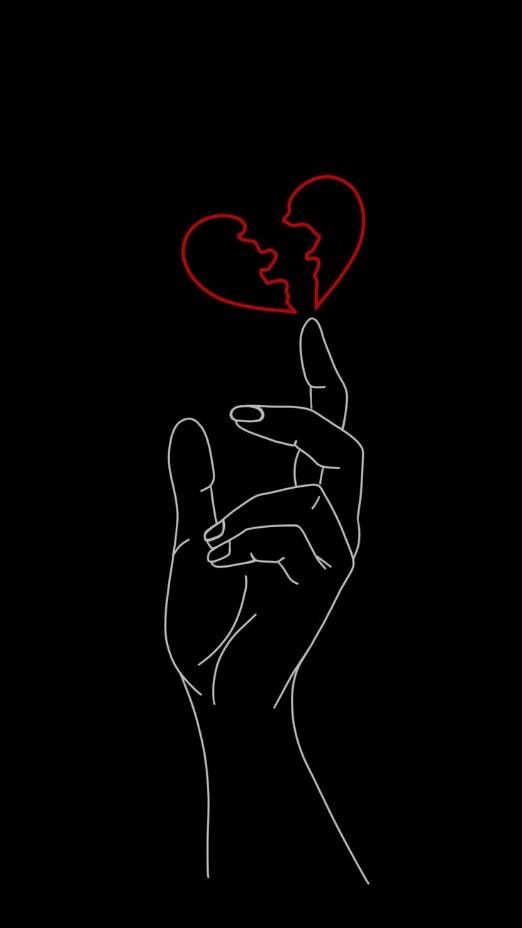 “In the case of a lost love,” he told me, “if the relationship went on for a long time, the grieving person has thousands of neural circuits devoted to the lost person, and each of these has to be brought up and reconstructed to take into account the person’s absence.”
“In the case of a lost love,” he told me, “if the relationship went on for a long time, the grieving person has thousands of neural circuits devoted to the lost person, and each of these has to be brought up and reconstructed to take into account the person’s absence.”
Which brings us, of course, to the pain.
Love hurts
When you’re deep in the mire of heartbreak, chances are that you feel pain somewhere in your body—probably in your chest or stomach. Some people describe it as a dull ache, others as piercing, while still others experience it as a crushing sensation. The pain can last for a few seconds and then subside, or it can be chronic, hanging over your days and depleting you like just like the pain, say, of a back injury or a migraine.
This essay is adapted from The Little Book of Heartbreak: Love Gone Wrong Through the Ages (Plume, 2012).
But how can we reconcile the sensation of our hearts breaking—when in fact they don’t, at least not literally—with biophysical reality? What actually happens in our bodies to create that sensation? The short answer is that no one knows.![]() The long answer is that the pain might be caused by the simultaneous hormonal triggering of the sympathetic activation system (most commonly referred to as fight-or-flight stress that ramps up heart and lung action) and the parasympathetic activation system (known as the rest-and-digest response, which slows the heart down and is tied to the social-engagement system). In effect, then, it could be as if the heart’s accelerator and brakes are pushed simultaneously, and those conflicting actions create the sensation of heartbreak.
The long answer is that the pain might be caused by the simultaneous hormonal triggering of the sympathetic activation system (most commonly referred to as fight-or-flight stress that ramps up heart and lung action) and the parasympathetic activation system (known as the rest-and-digest response, which slows the heart down and is tied to the social-engagement system). In effect, then, it could be as if the heart’s accelerator and brakes are pushed simultaneously, and those conflicting actions create the sensation of heartbreak.
While no one has yet studied what exactly goes on in the upper-body cavity during the moments of heartbreak that might account for the physical pain, the results of the aforementioned fMRI study of heartbroken individuals indicate that when the subjects looked at and discussed their rejecter, they trembled, cried, sighed, and got angry, and in their brains these emotions triggered activity in the same area associated with physical pain. Another study that explored the emotional-physical pain connection compared fMRI results on subjects who touched a hot probe with those who looked at a photo of an ex-partner and mentally relived that particular experience of rejection. The results confirmed that social rejection and physical pain are rooted in exactly the same regions of the brain. So when you say you’re “hurt” as a result of being rejected by someone close to you, you’re not just leaning on a metaphor. As far as your brain is concerned, the pain you feel is no different from a stab wound.
The results confirmed that social rejection and physical pain are rooted in exactly the same regions of the brain. So when you say you’re “hurt” as a result of being rejected by someone close to you, you’re not just leaning on a metaphor. As far as your brain is concerned, the pain you feel is no different from a stab wound.
This neatly parallels the discoveries that love can be addictive on a par with cocaine and nicotine. Much as we think of “heartbreak” as a verbal expression of our pain or say we “can’t quit” someone, these are not actually artificial constructs—they are rooted in physical realities. How wonderful that science, and specifically images of our brains, should reveal that metaphors aren’t poetic flights of fancy.
But it’s important to note that heartbreak falls under the rubric of what psychologists who specialize in pain call “social pain”—the activation of pain in response to the loss of or threats to social connection. From an evolutionary perspective, the “social pain” of separation likely served a purpose back on the savannas that were the hunting and gathering grounds of our ancestors.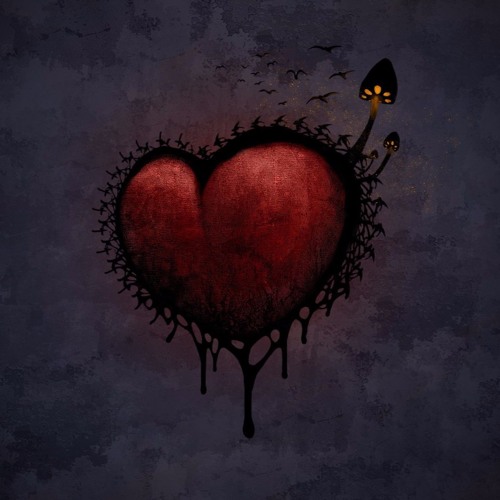 There, safety relied on numbers; exclusion of any kind, including separation from a group or one’s mate, signaled death, just as physical pain could signal a life-threatening injury. Psychologists reason that the neural circuitries of physical pain and emotional pain evolved to share the same pathways to alert protohumans to danger; physical and emotional pain, when saber-toothed tigers lurked in the brush, were cues to pay close attention or risk death.
There, safety relied on numbers; exclusion of any kind, including separation from a group or one’s mate, signaled death, just as physical pain could signal a life-threatening injury. Psychologists reason that the neural circuitries of physical pain and emotional pain evolved to share the same pathways to alert protohumans to danger; physical and emotional pain, when saber-toothed tigers lurked in the brush, were cues to pay close attention or risk death.
On the surface, that functionality wouldn’t seem terribly relevant now—after all, few of us risk attack by a wild animal charging at us from behind the lilacs at any given moment, and living alone doesn’t mean a slow, lonely death. But still, the pain is there to teach us something. It focuses our attention on significant social events and forces us to learn, correct, avoid, and move on.
When you look at social pain from this perspective, you have to acknowledge that in our society we’re often encouraged to hide it. We bottle it up.![]() While of course it’s possible to be private about one’s pain and still deal with it, and it may not be so healthy to share your sob story with everyone you meet on the street, if you’re totally ignoring it and the survival theory holds true, then you’re putting yourself at risk because you’re not alerting others to a potential crisis.
While of course it’s possible to be private about one’s pain and still deal with it, and it may not be so healthy to share your sob story with everyone you meet on the street, if you’re totally ignoring it and the survival theory holds true, then you’re putting yourself at risk because you’re not alerting others to a potential crisis.
The heartbreak pill?
Several studies, also using the hot probe + image + fMRI combo, have shown that looking at an image of a loved one actually reduces the experience of physical pain, in much the same way that, say, holding a loved one’s hand during a frightening or painful procedure does, or kissing a child’s boo-boo makes the tears go away. Science shows that love is effectively a painkiller, because it activates the same sections of brain stimulated by morphine and cocaine; moreover, the effects are actually quite strong.
On one level this suggests a wonderfully simple and elegant solution, albeit a New Agey one, to physical or emotional pain: All you need is love. And it bolsters the notion, faulty though it may be for some of us, that if you’re suffering from a broken heart, moving on fast can bring relief.
And it bolsters the notion, faulty though it may be for some of us, that if you’re suffering from a broken heart, moving on fast can bring relief.
There’s a point, however, where this trend in fMRI research starts to enter a prickly realm: Because physical pain and emotional pain—like heartbreak—travel along the same pathways in the brain, as covered earlier, this means that theoretically they can be medically treated in the same way. In fact, researchers recently showed that acetaminophen—yep, regular old Tylenol—reduces the experience of social pain. “We have shown for the first time that acetaminophen, an over-the-counter medication commonly used to reduce physical pain, also reduces the pain of social rejection, at both neural and behavioral levels,” they write in their paper in the journal Psychological Science.
But some experts argue that the moment you put a toe on the slippery slope of popping pills to make you feel better emotionally, you have to wonder if doing so circumvents nature’s plan. You’re supposed to feel bad, to sit with it, to review what went wrong, even to the point of obsession, so that you learn your lesson and don’t make the same mistake again.
You’re supposed to feel bad, to sit with it, to review what went wrong, even to the point of obsession, so that you learn your lesson and don’t make the same mistake again.
While they might not admit it, for biologists and psychologists, understanding love on a chemical level is tantamount to finding the holy grail. After all, the more we understand about love in terms of science . . . well then, the closer we are to understanding what makes humans human, an advance that might be on a par with physicists cracking the mystery of the space-time continuum.
Ultimately, all this progress points to one thing: treatment, with both painkillers and antiaddiction drugs. Perhaps recovering from heartbreak could be as simple as wearing a patch (Lovaderm!) or chewing a special gum (Lovorette!) or popping a pill (Alove!) that just makes the pain go away.
If you could take a pill that assured that you could fall in love, fall out of love, or stay in love on command, would you take it?
Broken Heart Syndrome: a disease "out of the head" from which you can die
Sign up for our "Context" newsletter: it will help you understand the events.![]()
Image copyright, Getty Images
Your heart can suffer after some unfortunate event, and your brain is most likely responsible for your "heartbreak", experts say.
Swiss scientists are conducting a study on the so-called "broken heart syndrome".
Psychological stress can cause acute transient left ventricular dysfunction. The syndrome is manifested by the sudden development of heart failure or chest pain, combined with ECG changes characteristic of myocardial infarction of the anterior wall of the left ventricle.
- Scientists have found out how stress causes heart disease
Most often, this syndrome develops against the background of stressful situations that cause strong, often sharply negative, emotions. Such events can be the death of a loved one or separation.
Scientists do not yet have complete clarity on how this happens. In the publication of scientists in the medical journal European Heart Journal, it is suggested that the syndrome is provoked by the brain's response to stress.
In the publication of scientists in the medical journal European Heart Journal, it is suggested that the syndrome is provoked by the brain's response to stress.
The "broken heart syndrome" was first described by the Japanese scientist Hikaru Sato in 1990 and was named "takotsubo cardiomyopathy" (from the Japanese "takotsubo" - a ceramic pot with a round base and a narrow neck).
Image copyright Getty Images
This is different from a "normal" heart attack, when blood flow to the heart muscle is blocked. Blockage of blood flow to the heart occurs when there is a blood clot in the coronary arteries.
However, the symptoms of broken heart syndrome and heart attack are similar in many ways, most notably difficulty breathing and chest pain.
- Scientists: the brain of boys and girls reacts differently to severe stress
- Scientists: early baldness can be a sign of heart disease
Often some sad event is a kind of trigger that provokes the onset of the syndrome.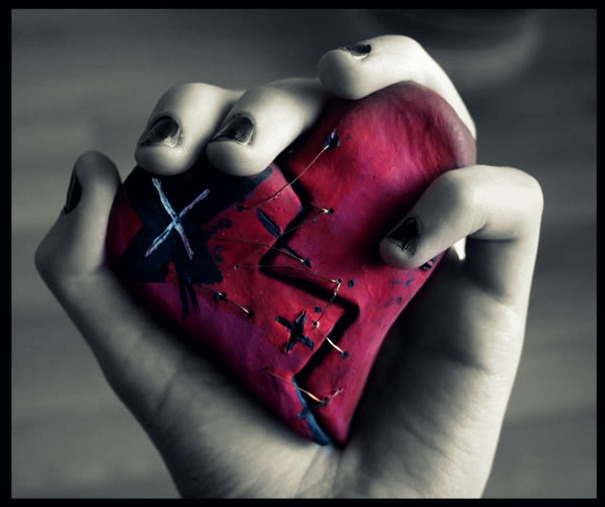 However, joyful events that cause strong emotions can also lead to the development of broken heart syndrome. For example, getting married or getting a new job.
However, joyful events that cause strong emotions can also lead to the development of broken heart syndrome. For example, getting married or getting a new job.
Broken heart syndrome can be temporary, in which case the heart muscle will recover in a few days, weeks or months, and in some cases the syndrome can be fatal.
In Britain, about 2500 patients are diagnosed with broken heart syndrome each year.
Image copyright Christian Templin, University Hospital Zurich
Image captionX-ray of the heart of a person diagnosed with takotsubo syndrome
Skip Podcast and continue reading.
Podcast
What was that?
We quickly, simply and clearly explain what happened, why it's important and what's next.
episodes
End of story Podcast
The exact cause of broken heart syndrome is unknown to scientists. However, it is suggested that this syndrome may be associated with an increase in the level of stress hormones - for example, adrenaline.
However, it is suggested that this syndrome may be associated with an increase in the level of stress hormones - for example, adrenaline.
Elena Gadri from the University Hospital Zurich, together with her colleagues, studied the brain activity of 15 patients diagnosed with broken heart syndrome.
Imaging data showed significant differences in the brain activity of these patients from that observed in 39 participants in the control group, who were healthy.
Much less communication has been noted between the areas of the brain responsible for controlling emotions and the body's unconscious (automatic) responses (such as the heartbeat).
"Emotions are formed in the brain, so it is quite possible that the disease is formed in the brain. And then the brain sends the appropriate signals to the heart," says Gadry.
Further research is needed to understand the mechanism of the syndrome.
The Swiss scientists who conducted the study had no CT scans of the patients before they were diagnosed with broken heart syndrome.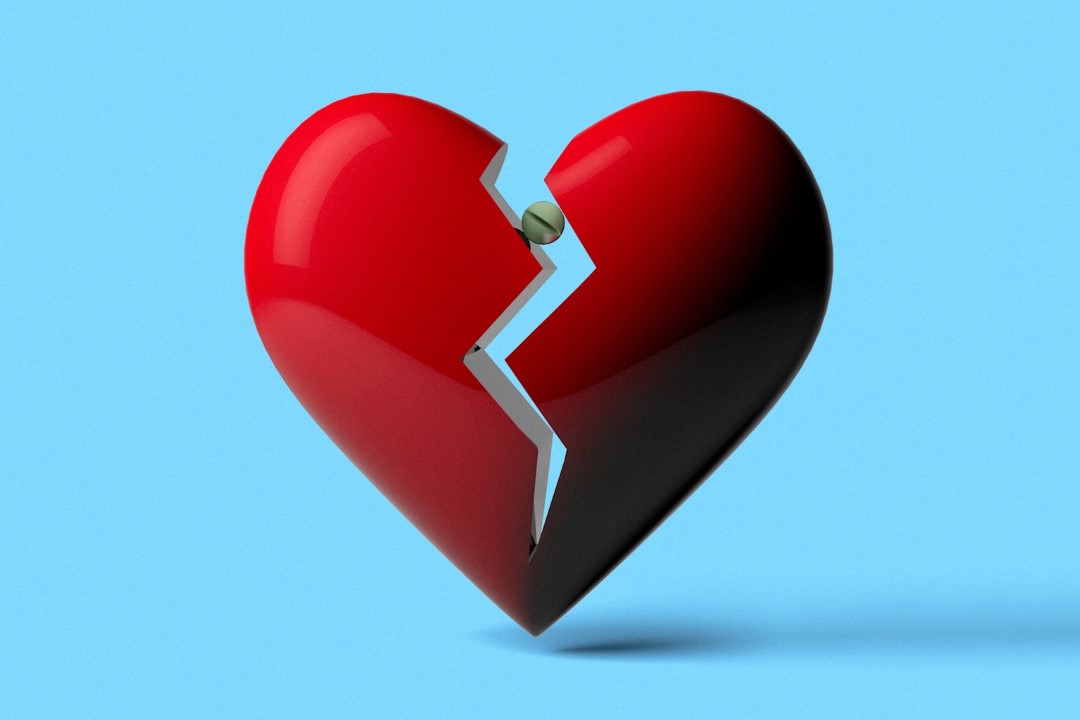 Therefore, researchers cannot claim that the reduction in connections between different parts of the brain was a consequence of the development of the syndrome, or that the syndrome developed due to the reduction in connections.
Therefore, researchers cannot claim that the reduction in connections between different parts of the brain was a consequence of the development of the syndrome, or that the syndrome developed due to the reduction in connections.
"This is a very important part of the study, it will help us better understand the nature of this syndrome, which is often overlooked, and it continues to be a mystery to us," says Joel Rose, head of the British organization Cardiomyopathy.
"These studies will help us understand what role the brain plays in the syndrome and why some people are affected and others are not," says Joel Rose.
"These observations confirm our long-standing assumption about the special role of the connection between the brain and heart in the formation of takotsubo cardiomyopathy," says researcher Dana Dawson from the British Heart Foundation.
The best recipe for a broken heart or a darkened mind is to lie down for a nap
- Christine Roe
- BBC Future
Sign up for our 'Context' newsletter to help you understand what's going on.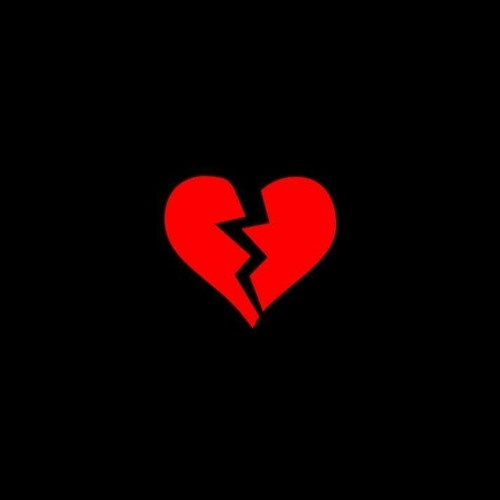
Image copyright, Getty Images
Getting just one night of normal sleep - or even just a short nap - is about summarizing emotional information and regaining control over your tousled feelings. But sleep is different, scientists warn.
When her daughter was still out of school, Rebecca Spencer learned what other parents and those who work with children are learning about the benefits of short naps. Without him, Rebecca's daughter became irritable and restless.
Spencer is a neuroscientist at the University of Massachusetts Amherst. So she decided to explore how she could scientifically explain what she already knew in practice about the importance of sleep.
"Many experience this: a child who does not sleep during the day becomes emotionally unmanageable," she says. "So the question arises: what happens to our emotions during nap? Are they processed somehow?"
Various studies have already shown that sleep in general helps us deal with our emotions.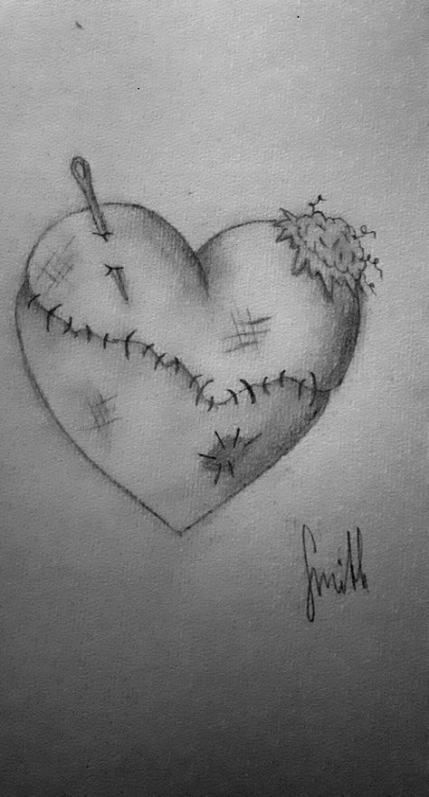 It plays an important role in encoding information based on the experiences of the day and in storing memories.
It plays an important role in encoding information based on the experiences of the day and in storing memories.
Emotional memories are unique in how they activate the amygdala, the amygdala in the brain where emotions are formed.
"Activating the amygdala is what makes your wedding day or your parents' funeral memorable," says Spencer. "More memorable than a typical day at the office."
The amygdala marks these memories as important, and during sleep the brain works with them longer than with the usual events of the day - so that in the future it will be easier to retrieve them from memory.
Image copyright Wolfram Scheible/University of Tubingen
Image captionIn sleep labs, scientists have found that just taking a nap can be very beneficial
But by affecting how memories are processed, sleep can change the power of memory itself.
"During sleep, the transformation of emotional memory is especially good," says Elaina Bolinger from the University of Tübingen (Germany).
- We ourselves reduce our sleep, and the consequences are very disturbing
- Sleeping from Friday to Sunday: how to live with idiopathic hypersomnia
- Is it true that with age a person needs less time to sleep
- How some people manage to get by with almost no sleep
In a recent study among 8-11- summer Bolinger and colleagues showed the children pictures - both unpleasant and neutral. Children showed an emotional reaction to this through pencil drawings that matched their feelings.
After that some of them slept. Others don't. The researchers from another room monitored the children's brains with attached electrodes.
The next morning the children were shown the pictures again, both the old ones and some new ones. Those who slept yesterday, in comparison with other children, managed their emotions better.![]()
Photo copyright, Wolfram Scheible/University of Tubingen
Photo caption,Sleep helps a child control emotions measured at the back of the brain.
It occurs every time the brain processes information - and its jumps are especially large when this information is associated with negative emotions.
But people are able to manage PPP - at least in part. As Bolinger says, "We actively try to change how we feel about certain emotions. We say to ourselves, okay, I'll try not to react to it so much, I want to suppress such an emotional reaction."
This study shows that sleep does help, both in summarizing emotional information and in controlling our response to it. And the effect is achieved quickly.
"Many other studies have also shown that just a night of sleep can be very beneficial," says Bolinger. -
But, as it turns out, sleep is different.
Types of sleep
REM sleep is usually associated with emotional memories, and the more REM sleep a person has, the better he understands both his own emotions and the emotional reactions of other people. He also remembers more emotional incidents from the past.
He also remembers more emotional incidents from the past.
One theory is that this is due to the lack of production of the stress hormone norepinephrine during REM sleep. Temporarily freed, our brain uses this time to process memories - stress-free.
Photo copyright, Wolfram Scheible/University of Tubingen
Photo caption,Researchers have found that REM sleep may help recycle memories.
The prefrontal cortex (the most developed part of the brain) is, according to Duran, the place where the impulses are born to remain calm and to refrain from reacting to what is happening immediately.
During wakefulness, this part of the brain controls the amygdala and therefore emotions. During sleep, control weakens. "So it sort of takes the brakes off our emotions during REM sleep," he says.
Scientists have already debunked the idea that dreams, which are especially emotionally charged during REM sleep, can be somehow meaningfully interpreted.
But recent experiences are quite often reflected in such dreams, mostly in the form of emotional sensations, and not a repetition of events.
- Oversleeping and not getting enough sleep: two paths to an early grave
According to Duran, preliminary data suggest that "what is played more in a dream is better remembered in the future."
Sleep pioneer Rosalind Cartwright (director of the Sleep Disorders Center in Chicago) explored this process.
According to Cartwright's theory, during dreams, stressful situations experienced the day before are mixed, integrated with similar memories.
Thus, the sleepers, as it were, place painful memories in the context of what has already happened to them in life and thus reduce the degree of negativity.
Image copyright Wolfram Scheible/University of Tubingen
Image captionDreams, while not worth interpreting, play an important role in integrating emotional experience
However, Spencer believes that sleep also plays a role in other phases. Non-REM sleep (in which we begin to fall asleep) consolidates memories. It is especially good for processing neutral memories.
Non-REM sleep (in which we begin to fall asleep) consolidates memories. It is especially good for processing neutral memories.
Spencer's research shows that the length of non-REM sleep affects how emotional memories are transformed.
Skip the Podcast and continue reading.
Podcast
What was that?
We quickly, simply and clearly explain what happened, why it is important and what will happen next.
episodes
The End of the Story Podcast
Short periods of sleep (eg, naps) mostly consist of "slow-wave sleep". One of the recent papers, co-authored with Spencer, appears to be the first to show that not only nighttime naps but short naps contribute significantly to the processing of children's emotional memories.
Without daytime sleep, the child becomes too emotional. With sleep, he is more calm (an effect Spencer jokingly calls "calm as an elephant"), reacting to emotional situations in the same way as to neutral ones.
With sleep, he is more calm (an effect Spencer jokingly calls "calm as an elephant"), reacting to emotional situations in the same way as to neutral ones.
In general, "children without naps are overly excitable and hypersensitive to emotional stimuli," she emphasizes. Simply because they did not have time to process, assimilate, consolidate the emotional load of the events of that day.
Spencer also believes that short naps also help adults, although perhaps not to the same extent as children.
Adults have a more mature hippocampus and therefore more developed abilities to deal with memories.
Therefore, it is not so harmful for an adult not to sleep during the day - this does not affect his behavior so destructively. However, only up to a certain point.
Image copyright Wolfram Scheible/University of Tubingen
Image captionEven naps without REM sleep help children cope with emotions later on
Spencer's research on sleep addiction at different ages shows "you need to do more memory consolidation as you get older because your hippocampus starts to get weaker as you get older. "
"
Interestingly, older people remember more positive events, while younger people remember negative ones more.
Perhaps this is because at a young age it is important to learn from unpleasant experiences to cope with the difficulties of life and avoid dangerous situations.
But towards the end of life, people prioritize pleasant memories. In addition, they experience a shorter REM phase, in which negative past events are more likely to be refracted, especially in people with depression.
Therapeutic uses
Scientists also want to understand how special types of sleep (such as lucid dreaming) can be used to treat post-traumatic stress disorder.
According to one study, sleeping within the next 24 hours after a traumatic experience makes memories of it less difficult.
For those who suffer from increased anxiety, sleep therapy can help to get rid of fears.![]()
However, things are not so simple with those people who are depressed.
Recently, wakefulness therapy has gained popularity, in which people are deliberately deprived of sleep to treat depression.
Sleeplessness may have a protective effect in some cases. Spencer points out that after severe psychological trauma, "the natural biological response will be insomnia" - as a normal response to an abnormal situation.
So sometimes it can be a good thing when sleep deprivation (especially REM sleep) prevents the brain from consolidating emotionally negative memories.
"There is evidence that people with long REM sleep are more depressed," says Duran. This is because, he believes, people with depression during the phase of REM sleep again and again return to memories of the bad.
Image copyright Wolfram Scheible/University of Tubingen
Image caption,Some people benefit from sleep, but some are better off avoiding REM sleep
Why does sleep deprivation help some people cope with depression or emotional trauma, while others do not?
New work by Duran and his colleagues shows that the cause may be in genetics.

